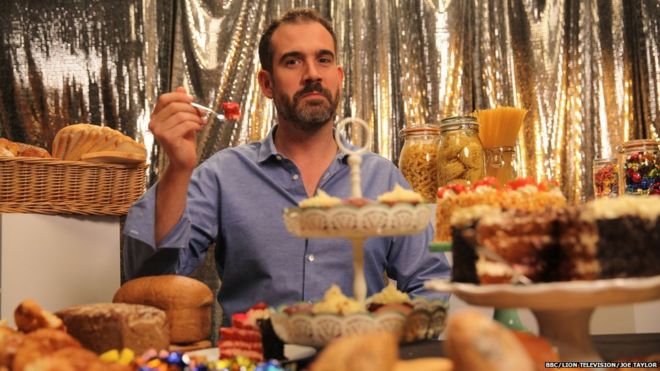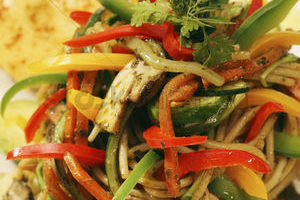Not all carbs are created equal, Watch Out for Beige Carbs – Dr Xand van Tulleken
Source: BBC News. https://www.bbc.com/news/health-44368601
Click the Link or Image below to WATCH VIDEO
Low-carb diets have been popular for a while. But, apparently, the colour of the carbs we eat also matters – and as Dr Xand van Tulleken explains, it’s the beige ones we have to watch out for.
Carbohydrates which are divided into three types – starch, sugar and fibre, are one of the ways our bodies get energy from food. Starch consists of foods like bread, pasta, potatoes and rice – but these “beige” varieties aren’t good for you.
Neither are “white” carbs – found in sugary foods such as drinks, sweets and processed and refined foods including cakes and biscuits.
Most of the starch and sugar in these beige and white carbs are broken down into glucose for energy, and if you eat too much, the glucose is stored as fat.
HOWEVER, reheating can turn bad carbs into good. If you reheat starches like pasta or toasted bread from the freezer, the molecules reconfigure themselves and become more resistant, allowing them to travel further in your gut and feed your microbiome.
Click the Link or Image to WATCH VIDEO
https://www.bbc.co.uk/iplayer/episode/b0b5y6c0/the-truth-about-27-carbs

![]()
Diet tips from BBC News:
Reduce:
- Flour, rice, potatoes, pasta, breakfast cereals and other processed grains
- White or highly processed brown bread
Replace with:
- Cauliflower rice, celeriac, sweet potatoes
- Rye or pumpernickel bread
Include:
- Eggs, meat, fish, nuts and legumes
- And half of each dish should be green or brightly coloured: fresh vegetables, salad greens, tomatoes and aubergines
Take the BBC Food test: How carb-clever are you?

The other type of carb – dietary fibre is found in fruit and vegetables and is called “green carbs”. It helps to keep you full, slows stomach emptying, and is usually the part of the plant that supplies you with vitamins and minerals.
It’s good for your teeth and gums and good for your guts, keeping everything moving and feeding your gut bacteria.
The third type is resistant starch – found in high-fibre foods such as lentils, beans and unprocessed whole grains. It is also hard to digest but in a good way: it gets into the colon, where its main job is not to feed you but rather to feed your gut bacteria.
Healthy gut bacteria are linked to a wide range of benefits, both physical and mental.

